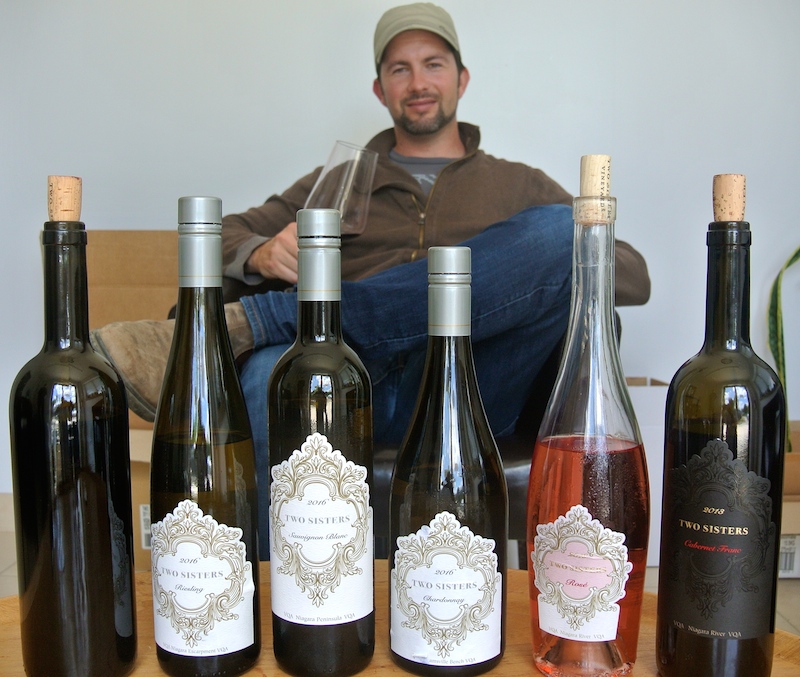
By Rick VanSickle
The Two Sisters Vineyards estate in Niagara-on-the-Lake is one of those rare wineries that blasted out of the gate with spectacular wines and an equally impressive tasting, retail and dining facility and has just gotten better with each passing vintage.
It was evident from the beginning that the goal was to produce Niagara wines at the ultra-premium level without compromise with a focus on red wines from grapes grown in the estate’s lower vigor soils of sand, loam, silt and some red shale of the Niagara River sub-appellation. Set upon a gentle sloping plain the vineyards typically enjoy full sunlight exposure throughout the day with excellent heat accumulation.
The location is an ideal site to grow the richer, more structured Bordeaux family of grapes and the winery has quickly established itself with in a short amount of time of specializing in those rich, deeply layered wines.
Two Sisters, however, runs a complete wine program and puts as much effort into the white wines as the red wines. The white wine grapes are primarily sourced from benchland vineyards in the Niagara Escarpment appellation. With higher elevations, excellent water drainage, air circulation and fossil-rich limestone this is where many of the most sought-after Niagara whites are grown.
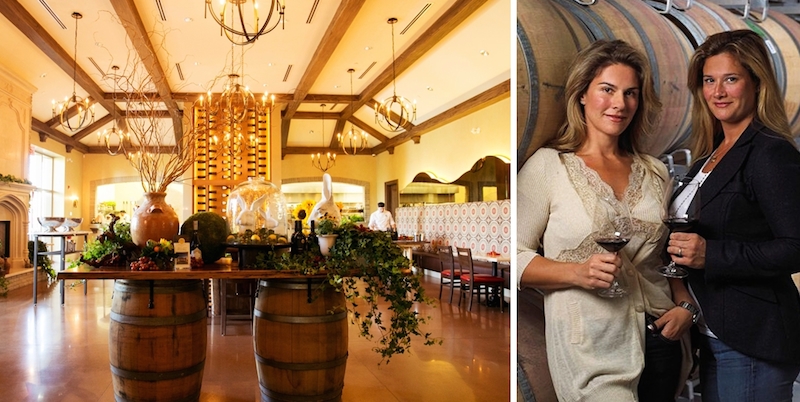
Owned and operated by sisters Angela Marotta and Melissa Marotta-Paolicelli, above, they brought in Adam Pearce, very top photo, to build the winery’s impressive portfolio that starts with top-notch red wines and flows to an ever-growing lineup of white wines, a new rosé and even a no-sulphur added, no additives added, no filtering, no fining Cabernet Franc that will turn more than a few heads when released later this summer.
Pearce has an excellent eye for sourcing fruit in Niagara to round out the portfolio, especially for fruit the estate does not grow. He acquired the entire 2016 Chardonnay crop from Daniel Lenko on the Beamsville Bench, Ontario’s oldest Chardonnay vineyard, planted in 1959.
A combination of Foxcroft Wismer and Lenko fruit make up the blend for his Riesling.
All white wines, by the way, are finished in screwcap, with the rosé and reds all finished in cork.
I sat down with Pearce at the winery facility, located away from the main estate, and tasted through a few wines recently. Here is what I can recommend.
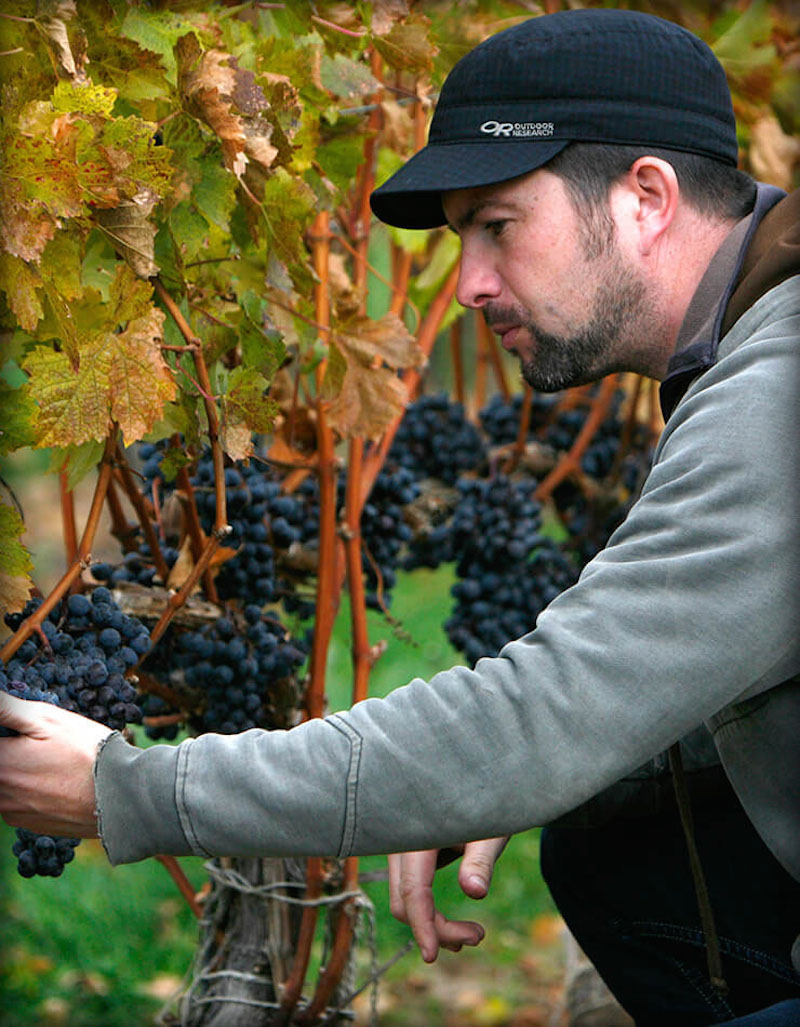
Two Sisters Sauvignon Blanc 2016 ($34, 90 points) — Sauvignon Blanc has suddenly become a rare variety in Niagara and hard to source due to a couple of winter-kill vintages that laid waste to many of the tender grape vines. There is a mad rush every fall to secure enough from growers to make this popular wine. Pearce combines 70% SB from the Twenty Mile Bench and the rest from Niagara-on-the-Lake and reaches back to his stint working in New Zealand for his inspiration of the style. It’s whole cluster pressed with about four months of light lees aging and stirring. The nose shows gooseberry, grapefruit, flint, lime, star fruit and grassy/herbal notes. It’s vibrant and crisp on the palate with lime, gooseberry, minerality and laser sharp acidity to keep it fresh to the last drop.
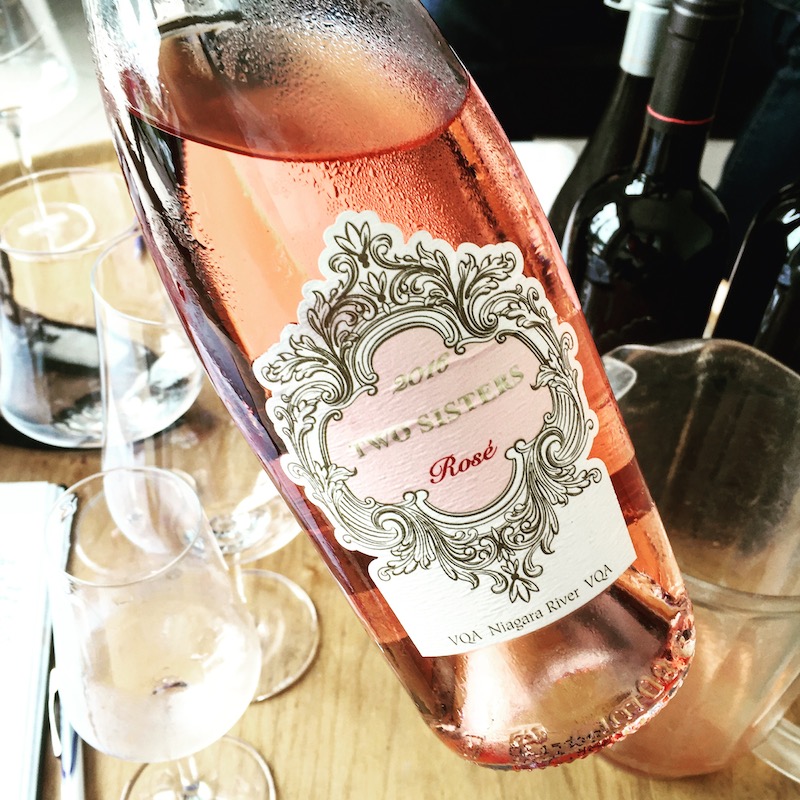
Two Sisters Rosé 2016 ($29, 89 points) — A blend of estate Merlot, Cabernet Franc and Cabernet Sauvignon that shows a pretty pale salmon colour in the bottle and glass. It’s pretty on the nose with a delicate mix of strawberry, hay, raspberry and wild berries. It’s dry and delicious on the palate with a mélange of red berries in a perfectly dry and refreshing style. Just lip-smacking good juice.
Two Sisters Riesling 2016 ($35, released this fall, 90 points) — The grapes were sourced from the Twenty Mile Bench and Niagara-on-the-Lake with lovely aromas of lime, minerals, grapefruit and subtle peachy notes. It’s made with 18 g/l of residual sugar, but balanced by typical bright Niagara acidity. It’s juicy and bright on the palate with lemon-lime, apple skin, river-rock minerality and vibrancy through the finish.
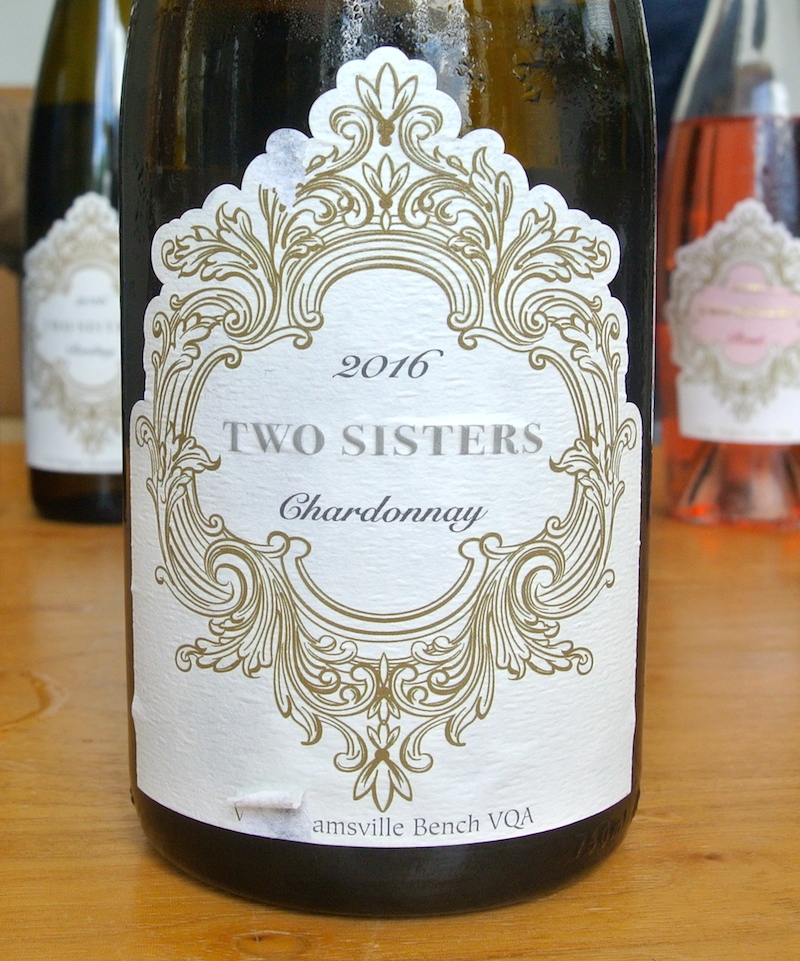
Two Sisters Chardonnay 2016 ($54, 93 points) — A real winner here. As mentioned above, sourced from the oldest Chardonnay vines in Ontario from Daniel Lenko’s superb Beamsville Bench vineyard. Pearce hand picks the grapes, uses whole-cluster pressing with 60% of the fruit wild fermented. Simply gorgeous Chardonnay that has that distinctive Lenko style, which is seductive, vivacious and rich with notes of poached pear, baked apple, vanilla toast and sublime minerality and spice notes. It has weight and viscosity on the palate with a leesy presentation to go with orchard fruits, flinty minerality, toasted spice and vanilla and a finish that goes on forever. It’s all lifted by citrus acidity through the length of the wine. This will age beautifully.
Two Sisters Cabernet Franc 2013 ($49, 89 points) — From a cooler, wetter vintage, but one of the largest crops in Ontario’s history. The estate fruit was cropped back to under two tonnes an acre, a crucial decision to achieve ripeness in the big reds. The nose shows black cherry, herbs, spice, cassis, licorice, bramble, earth and smoky tobacco notes. It has firm tannic structure on the palate with a darker tone to the fruit, layered and savoury spices, earth and a fairly long finish. Can age 3+ years.
Two Sisters Senza 2015 ($49, released this summer, 92 points) — Pearce prefers to call this 100% Cabernet Franc “low intervention” rather than a “natural” wine even though no sulphur has been added, no additives, no filtering and no fining. Depending on your definition of natural, this is close. Only the fact that the vineyards are not organic and two new French oak barrels were used for aging keeps this from being a natural wine in the strictest of definitions. Regardless, it is a beautiful wine with a lovely reductive, campfire note on the nose to go with red plums, mulled cherry, meaty notes, herbs and a complex array of savoury red fruits. “I wanted to make something quote, unquote, geeky,” Pearce says. He has achieved that in spades. It’s remarkably meaty, earthy and savoury on the palate with thick, rich black fruits, polished tannins, earth and layered spices that is all together complex, wild and untethered through a long finish. To drink and enjoy in the short term … but hard to resist seeing how at least one bottle ages for a year or two.





Comment here